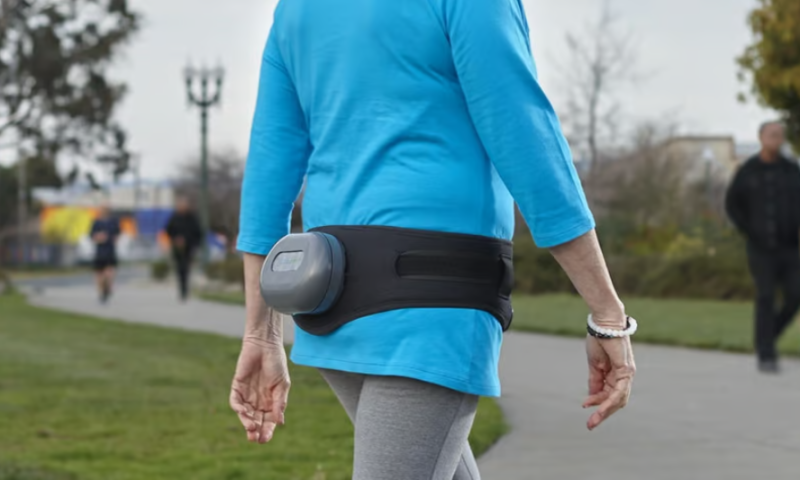The FDA has granted a clearance to its first prescription medical device to help treat low bone density, with a wearable vibrating belt designed for postmenopausal women.
The Osteoboost belt, developed by Bone Health Technologies, is a far cry from the century-old mechanical devices that once claimed to promote weight loss and overall vigor. Worn about the waist, the portable system delivers calibrated vibrations to the lower lumbar spine and hips.
According to the California-based company, the drug-free approach was developed in part from NASA research into preventing bone loss in zero gravity, which showed that specific amplitudes and low frequencies can help stimulate the skeleton.
The FDA’s de novo clearance carries green lights to help reduce the declines in bone strength and mineral density seen by women facing brittleness and osteoporosis, and it can also help improve bone health during the condition’s earlier precursor stage known as osteopenia.
“Today’s groundbreaking decision represents the first non-pharmacological therapy approved to treat this widespread and serious condition,” said Laura Yecies, CEO of Bone Health Technologies, which estimates that more than 52 million people in the U.S. have osteopenia.
Osteoboost previously received a breakthrough designation from the FDA, and the company says the device represents the first therapeutic specifically cleared for osteopenia—where the standard of care has typically focused on prescribing weight-bearing exercises, calcium supplements and vitamin D.
“Women’s health has been underserved for too long, making this a huge step forward for older women who have lacked effective treatment options and are seeking an effective way to protect their bone health,” Yecies said in a statement.
A sham-controlled, NIH-funded study of the vibrating belt showed it could alter the course of vertebral strength, as measured by a CT scan. Among participants who used the device at least three times per week, Osteoboost wearers lost about 0.5% bone strength on average, while the control group declined at a rate of 2.8%—with the device ultimately reducing the loss of bone strength by 83% over the course of one year. No adverse side effects were reported.
“Although lifestyle interventions such as exercise and diet are beneficial to bone, the effect is small,” said the study’s principal investigator, Laura Bilek, associate dean for research at the University of Nebraska. “The Osteoboost shows promise in slowing the loss of bone density and strength and may fill the treatment gap.”

